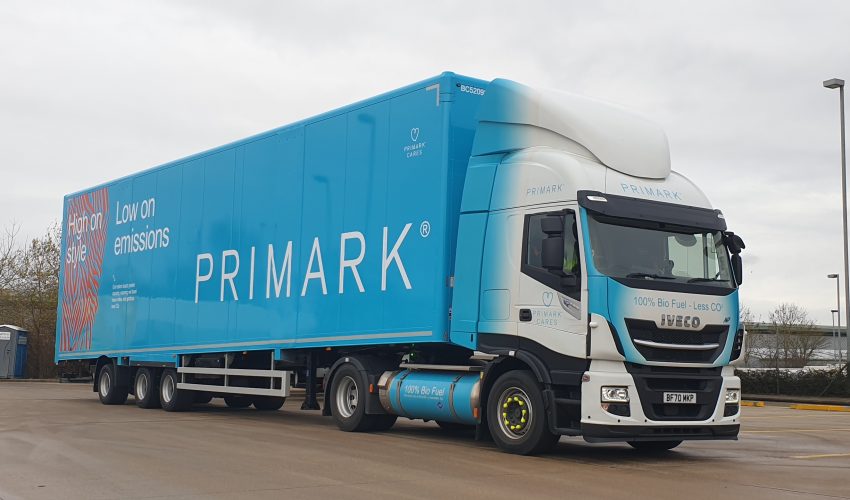Why aerodynamics are integral to achieving carbon footprint targets, whichever alternative fuel you choose.

Carbon footprint targets are becoming more real with each year that passes while there is the ever-increasing choices available in terms of fuel and vehicle solutions. Those in the haulage industry now have to find their routes towards a sustainable fleet to meet the needs of the future. As you would well know, this a difficult act for fleet operators to work out the right mix for their operational requirements.
The good news is that regardless of what pathway you take, it is vital that you maximise on the opportunity optimise the efficiency of fuel use in view of receiving a range of benefits explained below. Aerodynamics can almost always add significant benefit to a fleet, but if we feel they cannot, we will tell you.
Let’s have a gallop through the various options and explain more about where we can add value dependant on your fuel choice.
Diesel Fuel
The traditional fuel of choice for truck fleets, diesel is widely available and offers great range in terms of mileage. But the commercial costs are increasing and arguably more importantly, the environmental cost is far greater.
Because of this issue, our aerodynamic solutions have the greatest impact in CO2 reductions for diesel fleets because of the greenhouse gases they produce. Every litre saved is a 2.62kg reduction in CO2 emitted. Therefore, if you are currently running diesel in your fleet, it’s well worth exploring the opportunity to minimise this impact. This also stacks up commercially, whenever you save diesel there is a massive decrease in fuel costs. Aerodynamics can give ROI’s from as low as 6 months depending on the opportunity within the fleet.
Liquefied Natural Gas (LNG)/Compressed Natural Gas (CNG)
The most popular of the gas options, LNG offers a range of around 1,000km, with up to 20% less emissions than diesel.
However, achieving the stringent environmental targets within the timescale mandated is going to mean taking advantage of every benefit available on whatever solution you choose.
Even from the improved position of a LNG-fuelled fleet, you can still further improve the vehicle’s CO2 emissions but at a smaller percentage by finding the optimum aerodynamic solution.
Take the work we did with Ocado. Using our Auto-Adjust Aeromatic® solution, we achieved an additional 7.2% fuel saving which reduced cost, additional CO2 and even range. Due to the current lack of filling stations for LNG, the impact on range is equally, if not more, important than the reduction to the cost of fuel.
Biofuels/Hydrogenated Vegetable Oil (HVO)
There are a number of these fuels on the market, albeit many are not difficult for long haulage. Of all the options HVO seems to be one of the more popular due to its cleanliness. It is produced by mixing hydrogen and vegetable oils as opposed to methanol and vegetable oils, as in the case of biodiesel.
The barrier to use with biofuels, though, is availability and therefore price.
As with any high price fuel, there will be a saving to be had if improved aerodynamics are considered as part of the solution. Our products will help to reduce costs by increasing vehicle efficiency and our case studies show that return on investment periods are very reasonable.
Electric Vehicles
There are many different options when it comes to choosing an electric vehicle.
Battery Electric Vehicle (BEV)/Plug-In Electric Vehicle (PHEV)/Hybrid Electric Vehicle (HEV)
One obvious advantage of electricity as an option is the lack of emissions. However, range is often a determining factor as the national infrastructure of charging stations is still in development and the reality of fleet sizes and locations means many larger fleets need to consider having their own infrastructure.
Aerodyne has many products which, when fitted to an electric vehicle will increase range, giving the opportunity for greater distances between charges.
One example is the work we did with the Fuso eCanter electric truck which, when fitted with one of our air management kits, achieved a range improvement of 12%.
Hydrogen Fuel Cells
Although cited as a cleaner, longer-range alternative to BEVs, hydrogen fuel cells are, in reality, still in their development when it comes to being a viable option. There are issues with sustainability, price and a lack of infrastructure.
In conclusion, bespoke aerodynamics are vital whatever pathway you take. The benefits they have change dependant on the fuel used but ultimately, they still provide fuel cost reductions, increased range and also a CO2 saving benefit if the fuel is not carbon free. At Aerodyne, we believe optimising the aerodynamics of your fleet is the easy part of the challenge as there are almost always improvements to be had and our ROI periods are often short.
Our approach to business is always to be collaborative and innovative and we’re confident that, whatever the shape and size of your fleet, we can find extra savings, longer range or better efficiency.
Why not put us to the test?
You can contact our team on sales@aerodyneuk.com or call 01778 422000.
